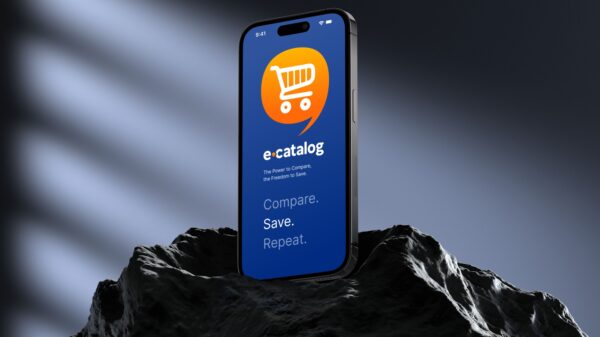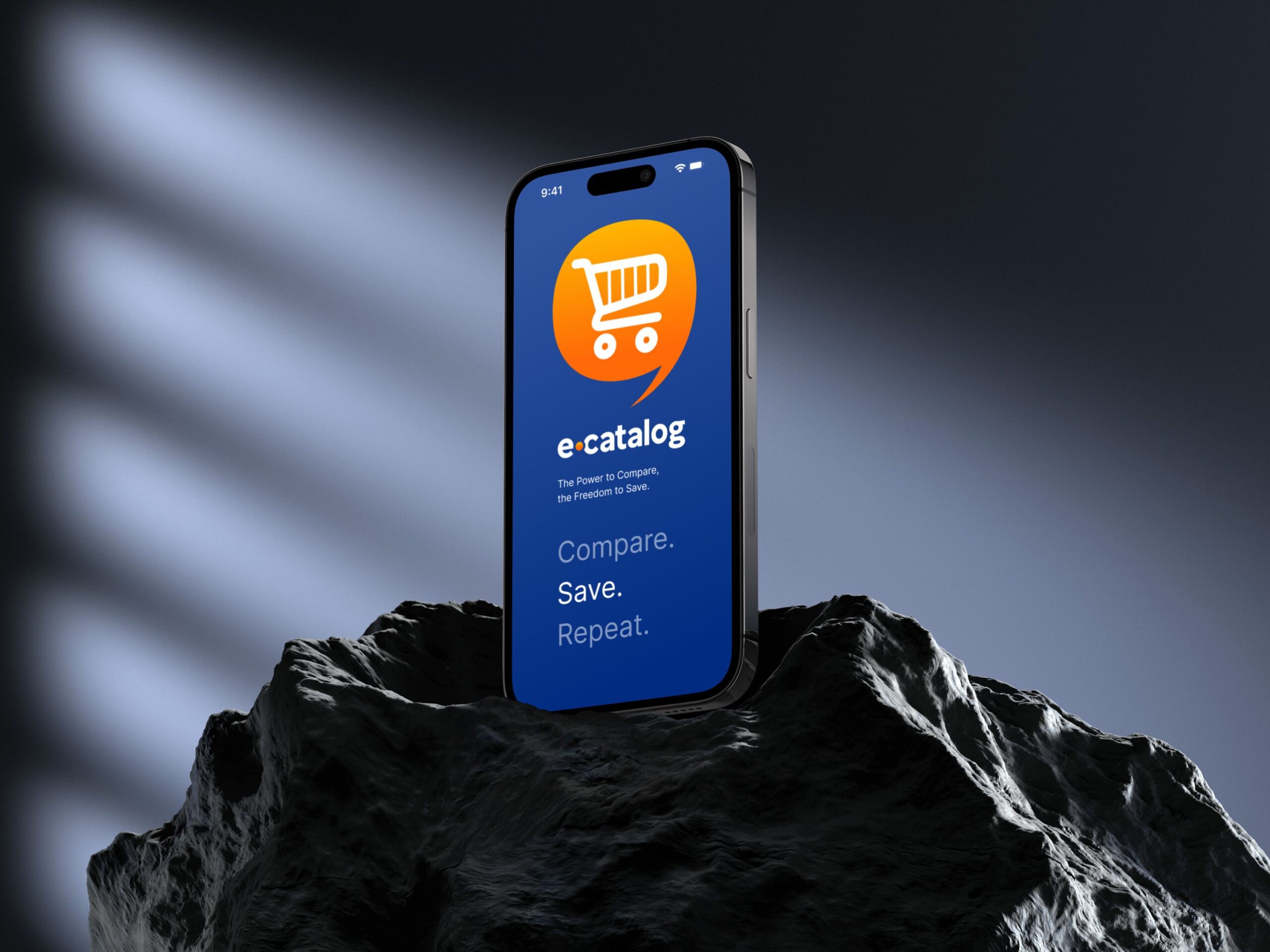In today’s e-commerce jungle, every retailer claims to offer the best prices and service. But how can shoppers navigate this sea of offers and truly find the best deal?
Anatolii Skrypniak, founder of the price comparison service E-Catalog, believes the key is empowering customers with tools for informed decision-making. Over 20 years, his platform has evolved from a simple product catalog to a smart assistant analyzing thousands of parameters.
“We don’t just show where it’s cheaper. We help buyers understand specs, compare models, and make informed decisions. To be sure of this, simply visit E-Catalog.com to explore a wide range of products and find the best deals in the U.S.” says Skrypniak.
It is worth noting that E-Catalog offers these same features not only in the U.S., but also in the U.K., providing a similar experience for finding the best deals, to compare prices and making informed decisions.
So how can you get the most out of such a service? The E-Catalog founder shares ten practical tips to help you save time and money on your online purchases.
Tip 1: Use Detailed Search
When choosing tech, it’s easy to miss important details. E-Catalog’s detailed search function solves this problem.
Take smartphone shopping. Most buyers focus on brand, storage, and camera quality. However, E-Catalog lets you filter models by dozens of parameters: screen type, refresh rate, wireless charging power, eSIM support, and even processor core type and count or water resistance rating.
This applies beyond electronics. When choosing a coffee machine, you can specify the type of coffee used, pump pressure, and automatic cappuccino function. Looking for a robot vacuum? You can set navigation type, battery life, and wet cleaning capability.
The detailed search is constantly updated to reflect new technologies and product features. This allows users to find exactly what they need without wasting time on unsuitable options.
Tip 2: Compare Modifications in Table Mode
Choosing a laptop can be a real puzzle. One model might have a dozen different configurations, making it easy to get lost in the differences. E-Catalog solves this with its table comparison mode. This feature presents all available modifications of a single model in a compact table, clearly showing key differences: processor, graphics card type, memory, and storage type.
Differences between versions are visually highlighted, allowing you to quickly understand whether it’s worth paying extra for a more powerful version or if the basic configuration is sufficient. This tool is especially useful when choosing laptops, tablets, and computers.
Tip 3: Search Products by Series and Lines
Manufacturers often create entire product families united by a common philosophy or design. E-Catalog uses this logic to simplify the selection process.
Suppose you’re interested in a kitchen toaster and have chosen a specific model. On E-Catalog, you can instantly jump to other products in this line – from coffee machine to electric kettles and waffle irons. This is particularly handy if you’re for example moving and want to assemble a complete set of kitchen appliances in a unified style.
The series search function extends far beyond electronics. For instance, when renovating a bathroom, you can select all plumbing fixtures from one series in a single click, ensuring design unity.
“We’re not limited to official series,” notes Skrypniak. “Our algorithms can group products by similar parameters. For example if you like a smartphone with a pop-up selfie camera, we’ll show all models with this feature, regardless of brand.”
This function is especially useful when choosing smart home tech, where device compatibility is crucial.
Tip 4: Pay Attention to Release Year
In the tech world, new products appear at breakneck speed. E-Catalog offers a handy tool for navigating this flood – the release year selection function.
People often buy outdated devices simply because they once heard about them or saw an ad. The release year selection function allows you to focus on the latest models.
This option is particularly useful in categories where technology evolves rapidly. Take TVs, for example. Each year, manufacturers offer new image processing chips, improved screens, and other useful features. Model names don’t always clearly indicate the model year. Sorting by release year lets you immediately see models with the newest features and most up-to-date technologies.
However, this isn’t just a novelty filter. E-Catalog provides context: next to the release year, users see the model’s key features. This helps quickly understand whether the new version offers substantial improvements or if last year’s model is still relevant and could be a good buy.
Tip 5: Use the Accessory Selection Function
Buying the main device is just the beginning. How do you choose the perfect accessories? There’s a solution for this task too.
On each gadget’s page, there’s a special tab with compatible accessories. For a new tablet, for instance, the service instantly suggests optimal styluses, keyboard cases, and docking stations designed specifically for that model.
Sometimes this function is indispensable. For example, when assembling a gaming system. You don’t need to study component compatibility. E-Catalog provides a ready-made list of suitable parts, saving your time and nerves.
Another unique E-Catalog feature is its fast response to market trends. As soon as a new flagship smartphone is released, the service is ready to offer a selection of compatible cases, screen protectors, and other accessories. This is especially valuable for those who love to be among the first owners of new releases.
Tip 6: Switch Between Adjacent Models
The catalog offers the ability to instantly compare adjacent models in a product line. This option is especially useful when choosing TVs, monitors, or smartphones, where the difference in screen size or memory capacity often plays a key role.
Imagine you’re choosing a TV and wavering between 55 and 65 inches. Now you can switch between these models with one click and immediately see how the price changes and what additional features appear in the larger version.
When choosing laptops, you can quickly compare models with different memory capacities or more powerful processors. For smartphones, it’s a convenient way to assess whether it’s worth paying extra for a version with more built-in storage.
“Our goal is to give users the ability to make informed decisions with the whole picture in front of them,” explains Skrypniak. “Often, a small additional payment can provide a significant improvement in characteristics, and conversely – sometimes the extra cost isn’t justified.”
This function is useful during sales seasons when the price difference between adjacent models can change significantly. You can quickly assess whether it’s more advantageous to take a higher-class model if it’s on a good discount.
Tip 7: Set Up Price Drop Notifications
This function is for those who are not in a rush to make a purchase and are willing to wait for the best offer.
It works simply: you choose the item you’re interested in and set your desired price. As soon as the item’s price drops to or below this level, you receive a notification. Moreover, the system analyzes your behavior on the site and can suggest setting up a notification if it notices that you often view a certain item but don’t make a purchase. This is especially convenient if you forgot or didn’t have time to set up a notification yourself.
Additionally, the algorithm considers seasonality and historical price data. For example, if you’re looking at winter tires in summer, the system might advise waiting for fall sales when prices typically drop.
This function also takes into account individual preferences. For some users, the priority is maximum discount, for others – buying from a trusted seller, even at a slightly higher price. E-Catalog adapts its recommendations to each specific user.
Tip 8: Use the Mobile Version and Synchronization
With smartphones always at hand, E-Catalog offers a fully functional mobile version of the site and convenient synchronization between devices. This feature makes the selection and purchase process truly flexible and convenient.
The mobile version of E-Catalog is a full-fledged tool for searching and comparing products. All key functions, including detailed filtering and table comparison, are available from your smartphone screen.
And of course, there’s seamless synchronization between devices. You can start choosing a laptop during your lunch break and continue from the same place in the evening on your home computer. All your search queries, selected models, and comparisons are automatically saved in your personal account.
This function is especially useful when choosing complex technical devices. You can study characteristics on a large computer screen, then quickly refresh the information on your smartphone while already in the store.
Synchronization also makes it easy to share found items with friends or family. Just send a link to the option you like, and your companion will see all the details and comparisons you’ve already made.
Tip 9: Explore Specialized Product Categories
The service offers deep analysis and comparison in niche categories that many don’t even think about.
For example, you can easily find and compare the most powerful chargers for your gadgets. E-Catalog allows you to filter chargers by power, number of ports, supported fast charging protocols, and even dimensions. This is especially useful for owners of multiple devices or travelers who value compactness and versatility.
Another example is the smart home devices category. Here you’ll find not only popular smart speakers but also specialized sensors, smart locks, plant watering systems, and much more. E-Catalog helps you understand the compatibility of these devices with various smart home ecosystems.
For photo enthusiasts, the service offers detailed comparisons of light filters, tripods, and other accessories rarely discussed in regular stores. You can compare weight, materials, and compatibility with your camera.
“We strive to be experts even in the narrowest niches,” notes Skrypniak. “Our goal is to help users find the perfect product, even if they don’t fully understand what they need yet.”
Tip 10: Keep E-Catalog Always at Hand and Participate in Its Development
Last but not least – make E-Catalog your constant companion in the world of online shopping. Bookmark the site, install the mobile app. Trust me, it will save you a ton of time and money in the long run.
Don’t stop at passive use. E-Catalog is a living, constantly evolving organism, and you can be part of this development. The service has a special “Questions and Suggestions” section where any user can propose a new feature or filtering parameter.
“Many of our best ideas came directly from users,” admits Skrypniak. “Someone suggested adding a filter for the presence of a specific port in laptops, someone else suggested the idea of comparing refrigerator energy efficiency. We carefully listen to every suggestion.”
Don’t hesitate to share your thoughts and wishes. Perhaps your idea will become the next cool feature of E-Catalog that millions of people around the world will use.































